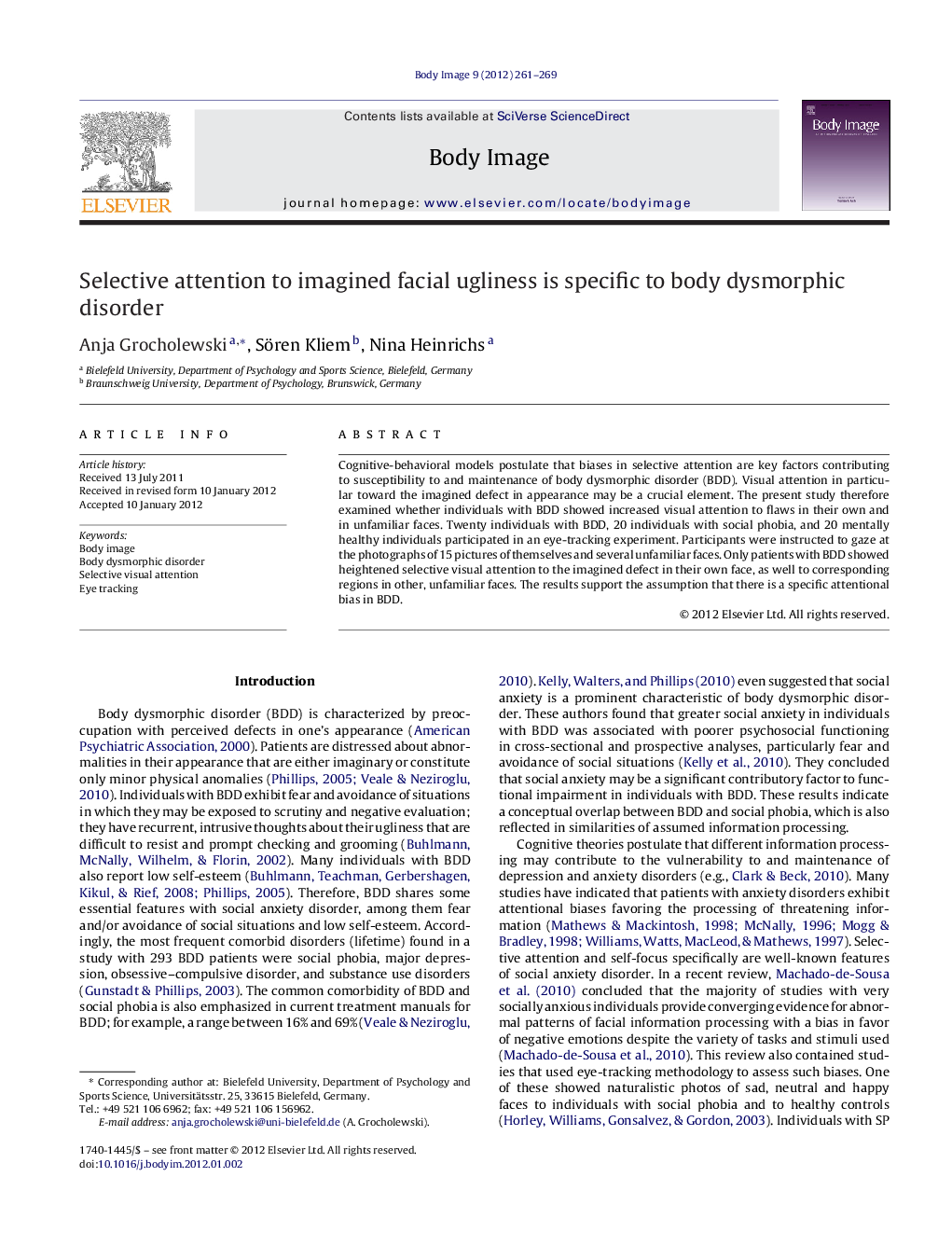| Article ID | Journal | Published Year | Pages | File Type |
|---|---|---|---|---|
| 903130 | Body Image | 2012 | 9 Pages |
Cognitive-behavioral models postulate that biases in selective attention are key factors contributing to susceptibility to and maintenance of body dysmorphic disorder (BDD). Visual attention in particular toward the imagined defect in appearance may be a crucial element. The present study therefore examined whether individuals with BDD showed increased visual attention to flaws in their own and in unfamiliar faces. Twenty individuals with BDD, 20 individuals with social phobia, and 20 mentally healthy individuals participated in an eye-tracking experiment. Participants were instructed to gaze at the photographs of 15 pictures of themselves and several unfamiliar faces. Only patients with BDD showed heightened selective visual attention to the imagined defect in their own face, as well to corresponding regions in other, unfamiliar faces. The results support the assumption that there is a specific attentional bias in BDD.
► Selective attention to imagined flaw key factor in body dysmorphic disorder (BDD). ► BDD is characterized by biased visual attention toward the imagined flaw. ► Bias occurs when scanning the own as well as other faces. ► Heightened visual attention may be a target for attention retraining in BDD.
